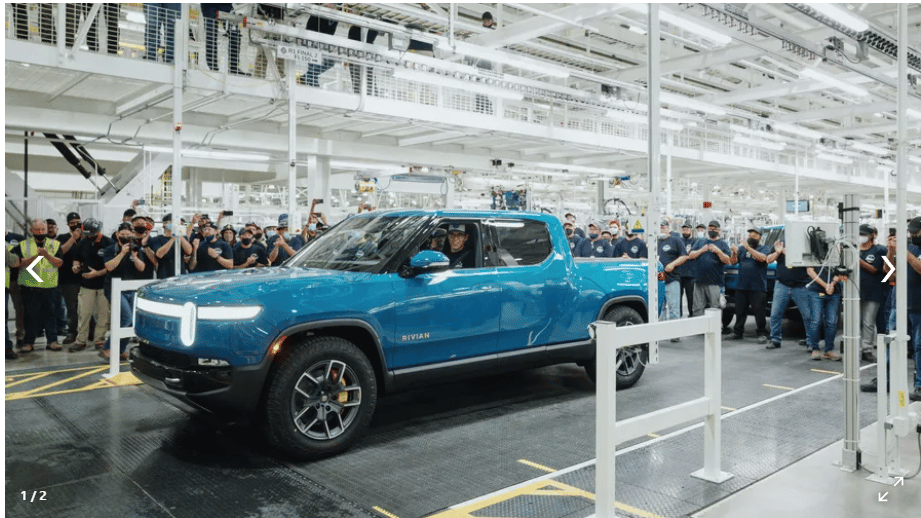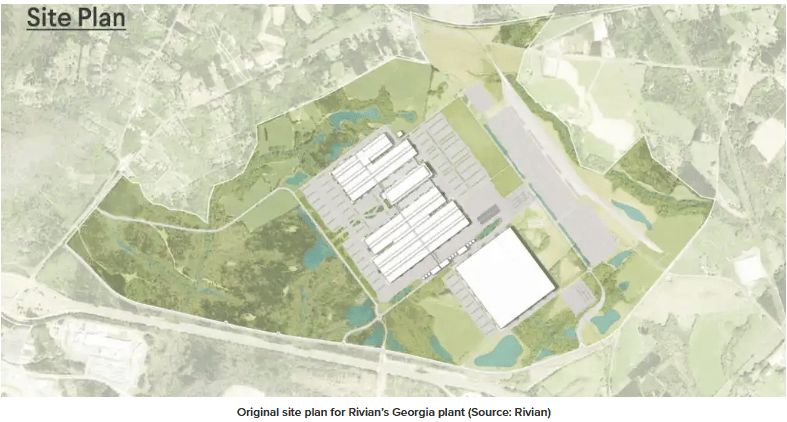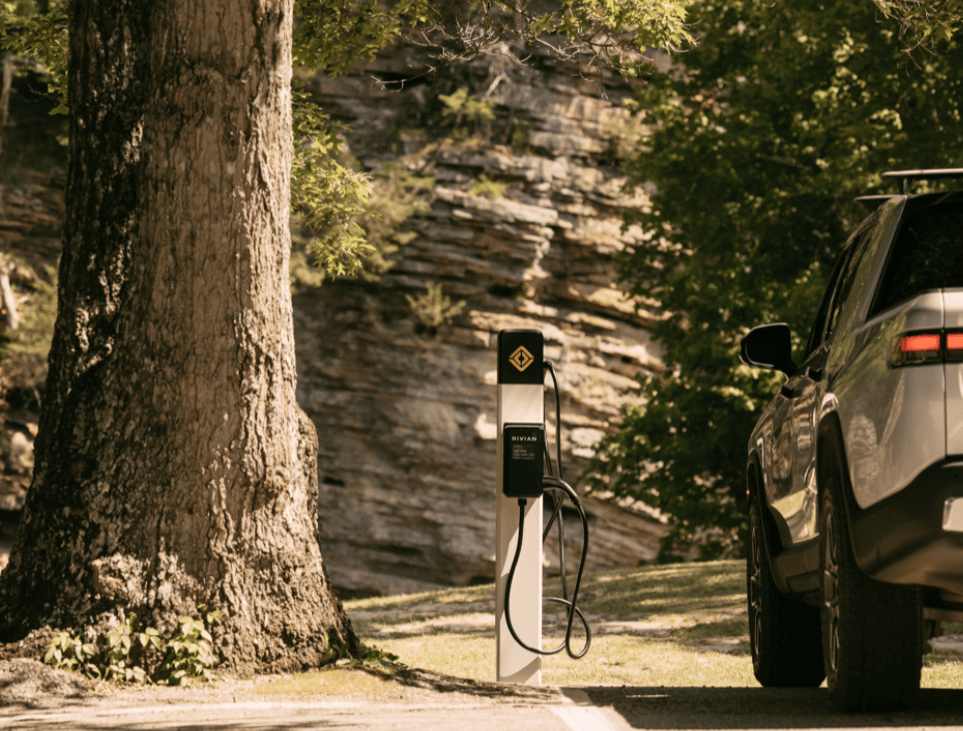- The Overlanding Crowd
- Posts
- Rivian (2009), deep-dive into the company history
Rivian (2009), deep-dive into the company history
Plus Overlanding trends on Social Media, and a poll for you.
Hi, Overlanding Crowd. And welcome to our second chapter.
As a quick reminder, this is a free weekly B2B newsletter which will delve into the companies in the space via a weekly deep-dive, as well as trends, tactics and innovation in our specific niche. And the niche we focus on encompasses Overlanding, Van-Life and Vehicle Based Camping.
This week, in Chapter 2, we look at:
Recent - June trending overlanding discussion topics as researched by our AI social scraping tool
Deep-dive into RIVIAN from day 1 - “Electric vehicles designed for adventure”?
Poll - what would you like to see more of?
PS - if you’re new here or have been forwarded this email, you can sign up for the free newsletter here:
And please share if you like what we do. It helps enormously to drive down our cost or reader acquisition.
“Do Not Follow Where The Path May Lead. Go Instead Where There Is No Path And Leave A Trail.” - Ralph Waldo Emerson
Overlanding and vehicle based camping Trends
OK, so a few more trends that are being discussed regularly, courtesy of our new AI driven Social Scraping tool. Still a work in progress, but very useful insights for our segment.
Modular Drawer Systems Gain Popularity
85 mentions across Reddit and YouTube.
Brands: Decked, Goose Gear.
Storage optimization driving upgrades.
DIY Rooftop Storage Hacks
42 YouTube video comment trends.
Popularity driven by cost-conscious builds.
Minimalist Builds on the Rise
39 mentions in vanlife Reddit spaces.
Sentiment: Highly positive for space-saving rigs
🏞️ The Rivian Story: Where Adventure Meets Innovation

topgear.com
You could say Rivian was born in a garage, but not the startup-in-hoodies kind. RJ Scaringe grew up near the Indian River in Florida, where weekends meant fixing up classic cars and escaping into the wild. By his early 20s, RJ had developed a conscience about cars' environmental cost and decided to do something radical: build a car company that could deliver off-road capability without emissions.
He earned his PhD in mechanical engineering from MIT’s Sloan Automotive Lab, and in 2009, he launched what would become Rivian. He didn’t just chase a product—he envisioned a lifestyle: exploration with zero compromise. A few name changes later, “Rivian” stuck—an homage to his riverfront upbringing—and the company got to work, mostly in secret for nearly a decade.
🛠️ A Vision in Motion
Rather than launch with a flashy sports car like Tesla did, Rivian focused on two vehicles that could handle dirt, snow, riverbeds, and rock: the R1T pickup and the R1S SUV. These weren’t just electric trucks—they were built for camping, kayaking, and backcountry travel. Ground clearance? Nearly 15 inches. Quad-motor power? Yes. An optional camp kitchen with slide-out burners? Absolutely.
By acquiring Mitsubishi’s old factory in Normal, Illinois in 2017, Rivian skipped years of construction. That factory now serves as the epicenter for R1 production and fleet vehicle assembly.
The result? Rivian’s vehicles don’t just compete—they redefine what electric off-roaders can do.
💸 Big Backers, Bigger Bets
In just a few years, Rivian went from an unknown EV startup to a juggernaut with some very powerful friends. Amazon came aboard in 2019 with a $700 million investment and a 100,000-van order for its delivery fleet. Ford followed with $500 million (though the partnership fizzled out later), and Cox Automotive invested $350 million.
By 2021, Rivian had raised more than $11 billion in private capital. Its November IPO raised another $13.5 billion, making it one of the largest in U.S. history. For a moment, Rivian's market cap eclipsed legacy automakers like Ford and GM.
But big money doesn’t mean easy sailing. Rivian’s early production ramp was turbulent. Between chip shortages, supplier delays, and soaring costs, scaling up proved harder than expected. Still, the company pushed forward, producing nearly 50,000 vehicles in 2023 and another 50,000 in 2024.
👥 Who’s Steering the Ship?

Forbes.com
RJ Scaringe isn’t just the founder—he’s the cultural engine of Rivian. Known for his calm demeanor and obsession with execution, RJ still owns around 1.4% of the company and holds outsized voting control through Class B shares.
Alongside him is a core leadership team of auto veterans and tech innovators:
Claire McDonough (CFO): Formerly with JP Morgan and GE, she brings sharp financial discipline as Rivian manages its cash burn and capital raises.
Wassym Bensaid (SVP Software): Leading Rivian’s autonomy and vehicle software programs, Bensaid is a key player in the company’s shift toward next-gen, software-defined vehicles.
Supporting them is a seasoned Board of Directors, which includes veterans from the auto, finance, and sustainability sectors—providing balance to Rivian’s ambitious roadmap.
🧭 Beyond the R1: R2, Autonomy & the Georgia Factory
Rivian’s future hinges on its next-generation platform, the R2, revealed in early 2024. Priced from around $45,000, this mid-size SUV aims to bring Rivian’s overlanding DNA to a broader market. Smaller, more affordable, and easier to produce, R2 will be Rivian’s volume play when it hits roads in 2026.
To build it, Rivian is constructing a massive $5 billion manufacturing campus in Stanton, Georgia. After a brief pause in 2024 to conserve cash, construction resumed thanks to federal loans and a joint venture with Volkswagen.

The VW deal, inked in June 2024, is one of Rivian’s most strategic moves yet. The German automaker committed up to $5 billion—$1 billion upfront, another billion in 2025 and 2026, plus $2 billion in shared tech development. Together, Rivian and VW will co-develop a flexible EV architecture and operating system. This isn’t just a capital lifeline—it’s a fusion of Rivian’s nimbleness with VW’s industrial scale.
Short interlude - RIVIAN continues below..
What would you most like to see in this newsletter?Feel free to add other suggestions in the comments. |
Thanks. Now back to RIVIAN…
🤖 Driving Toward Autonomy
Rivian isn’t just building trucks—it’s building software to run them. The company has invested heavily in autonomous driving, OTA (over-the-air) updates, and intelligent off-road driving assistance.
Their upcoming “AI & Autonomy Day” (expected late 2025) will showcase in-house driver assistance tools, fleet-level intelligence for commercial vans, and a roadmap to Level 3 autonomy—vital for adventure vehicles that may need to self-navigate remote trails or terrain with minimal GPS.
In 2023, Rivian also acquired A Better Route Planner, a fan-favorite EV trip-planning app. It now powers navigation inside Rivians, making route planning to far-off campsites or trailheads smoother than ever.
🧗♂️ Outdoor Culture Built In
Everything Rivian does seems steeped in outdoor ethos. Their Adventure Network of fast chargers is placed strategically near national parks, trailheads, and rural routes. Their Level 2 “Waypoints”—destination chargers—are now showing up at state parks and outdoor resorts. This isn’t just convenience—it’s part of Rivian’s identity.

Partnerships with Yakima, MAXTRAX, and others have created a catalog of off-roading and overlanding gear tailored for Rivian’s platform. The optional Camp Kitchen, which slides out from the R1T’s “gear tunnel,” includes an induction cooktop and modular sink, purpose-built for remote cooking.
And it’s not just talk: Rivians have been field-tested across continents. Their trucks starred in Long Way Up, an epic 13,000-mile overland journey from Patagonia to Los Angeles. The vehicles tackled high altitudes, jungle humidity, and desert trails—proving electric overlanding isn’t a fantasy.
📉 Current Challenges & The Road Ahead
Despite its momentum, Rivian’s financials show a company still finding its economic footing. Revenue reached nearly $5 billion in 2024, but net losses stayed above $4.6 billion. Even with gross profit finally turning positive, margins remain tight and scaling remains slow.
In early 2025, deliveries dropped 23% year-over-year amid global EV demand softening and tariff-related pressures. Still, Rivian sees brighter horizons: the Georgia plant will open new capacity, the R2 will bring price-sensitive buyers into the fold, and the VW joint venture may unlock new markets and platforms.
🛤️ Final Thoughts
Rivian isn’t trying to be the next Tesla. It’s carving its own trail—literally. With vehicles built for dirt roads and mountaintops, a CEO who genuinely loves the outdoors, and a culture driven by clean adventure, Rivian is more than an automaker. It's a movement.
The question now is whether it can balance its idealism with the gritty execution needed to scale, satisfy shareholders, and win in a crowded EV market. If it can, the road ahead looks not only long—but electric, wild, and ready for anything. This is a really interesting case study for us. We’ll keep an eye.
Thanks for reading and I hope you find value in the newsletter. If you do, please share. It helps a lot. Also feel free to reach out directly with any thoughts or feedback (or interests in sponsoring / partnering) at [email protected]
Happy driving.
Until next week, go n-éirí leat!
Derek.
